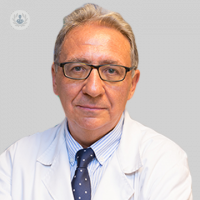¿Cómo combatir y frenar el parkinson?
Written by:
What is the life of a person with Parkinson's? What treatments are there?
The life of a patient, of a patient with Parkinson's disease, is an easy life at the beginning and normal and complicated when the disease progresses. Such a life may be almost normal initially, as long as the patient heeds the doctor, exercise and take the pills regularly. I always recommend that you should not look too much on the internet or pay attention to what other patients say because it leads to a lot of confusion. When the patient performs the treatment correctly during the first years will lead a life almost normal. Subsequently there may be alterations, rare behavioral disturbances such as impulsive gambling play or memory loss and rare movements that are due to disease progression and treatment.
Let's talk now about Parkinson's disease treatment. Early-stage treatments have nothing to do with early-stage treatments. The disease progresses slowly and the patient can lead an almost normal life. What do we do with a newly diagnosed patient? Well the first thing that is done is to tell him what is going to happen and what he should do. Later we recommend pills. There is a pill that probably decreases the progression of the disease, which is the one we usually give. This would be the first step. A second step is a group of pills called dopaminergic agonist, which is the substance, a substance similar to the natural substance we have in the brain that is called dopamine and are useful at the beginning of the disease, especially when the patient is young. Then we add other treatments that are the most effective we have, which consist of replacing the missing substance in the brain and, as we said, is called dopamine, we give a precursor because dopamine does not enter the brain directly from the blood. And this treatment is called levodopa or L-Dopa. At this time 3-4 5-7 years have passed since the beginning and the patient leads a life almost almost normal, except that he has to take pills, of course, which I understand is always a sloppiness. When the disease progresses on occasions the patient notices that the pills stop taking effect, especially in the morning, when rising, since it rises rather awkward. And then there may be rare movements that we say, we call dyskinesia, and they are similar to tics.

We then add other treatments to make this missing substance, levodopa, fluctuate less, that is, it does not have ups and downs in the brain. And these treatments are called inhibitors of a chemical, an enzyme that degrades the substance in the brain. We have for advanced cases three types of treatments.One treatment, especially when the patient is young, is to put some electrodes in the brain, which is called deep brain stimulation and that many times the sick believe it is novel, but it is not true; this treatment in Spain, we have been doing it for about 15-20 years. At other times we do something called gastrostomy. We put a hole in the stomach to put directly that levodopa that is missing directly in the stomach, in the duodenum, so that they pass better to the brain and decrease the dyskinesias and fluctuations. And we also have another substance that is similar, another dopaminergic agonist, similar to levodopa and given by a subcutaneous pump and called apomorphine. As sometimes there is memory loss, we put patches of a substance called rivastigmine that improves memory and we also give many other drugs because the patients are sometimes depressed or have strange ideas.
What are the first symptoms of Parkinson's?
The first symptoms of Parkinson's occur long before we realize that the patient goes to the doctor and manifests the first motor symptoms of the disease. And what are these symptoms? For one of them is that the smell disappears or has much less smell of normal people. People also become depressed and have more constipation than normal subjects. All this happens a lot, it is very specific, and it is difficult to diagnose. There is a very characteristic fact, that is, that it has a thing called sleep disorder associated with the REM phase in which the patient while sleeping the brain does not block the body and makes movements of struggle and sticks the person with the one sleeping with him. These patients have a very high percentage of developing Parkinson's disease. When Parkinson's disease appears, how does it appear? As it appears, many times not as what people believe, that is the tremor. It can tremble and not have Parkinson's, but what is certain is that there is clumsiness. The patient has the clumsiness to move, to write, to button the buttons, to fasten the shoelaces, which is what we say affinesia. Many times there is trembling, which is a tremor that disappears with movement. To all this is added, in the course of the disease, imbalance and later there are psychological alterations and there may be an important memory loss in very advanced stages.
What are the stages of the disease?
The stages of Parkinson's disease are classified according to, fast, in five stages. In the initial stage begins on one side of the body. Parkinson's disease typically begins on one side of the body. Subsequently it extends to the other side of the body, which is what we, the neurologists , classify as stage two in the classification of American neurologists. Then there are alterations of the balance, which would be grade 3, and then, later, appears the already highly developed disease, which would be grade 4 and very serious subjects have grade 5. How long does it take to move from grade one? It is highly variable but possibly 20, 15 or more years. And this is the summary of how things are going in Parkinson's disease.


